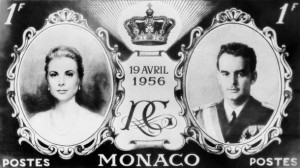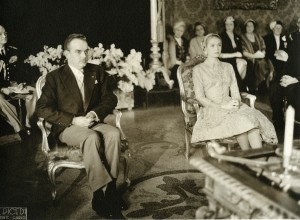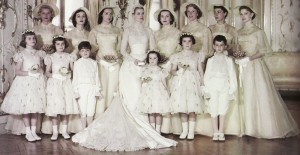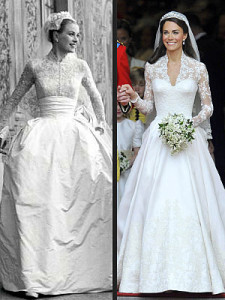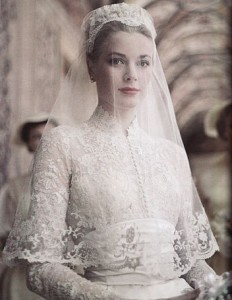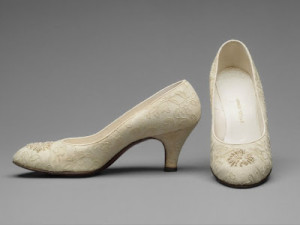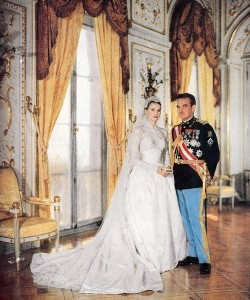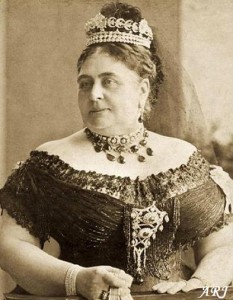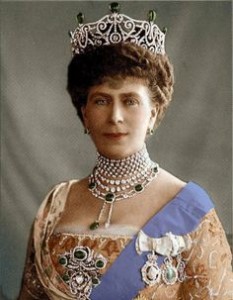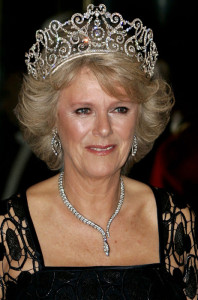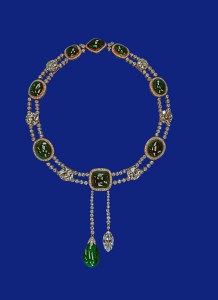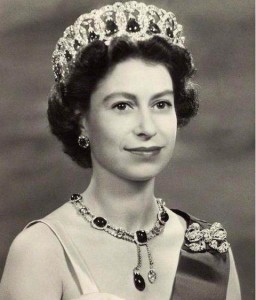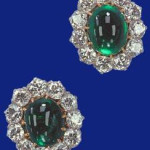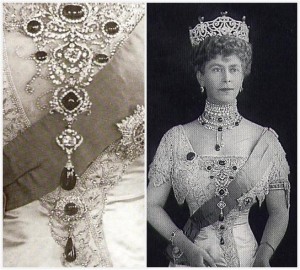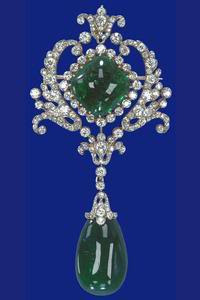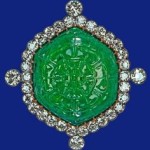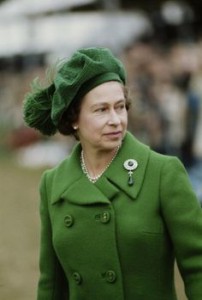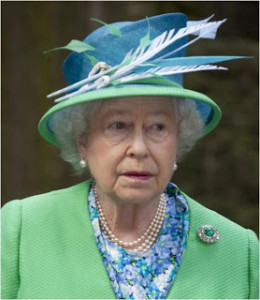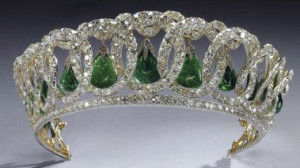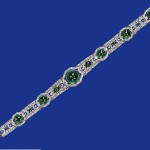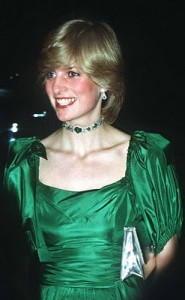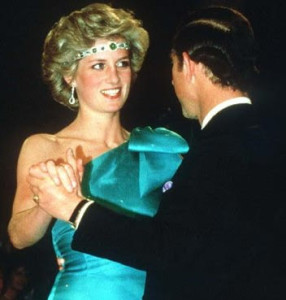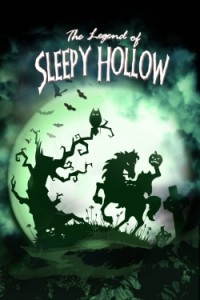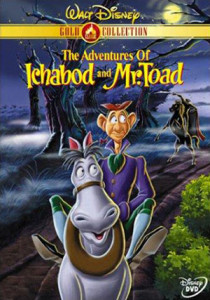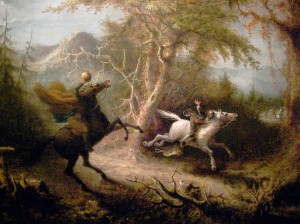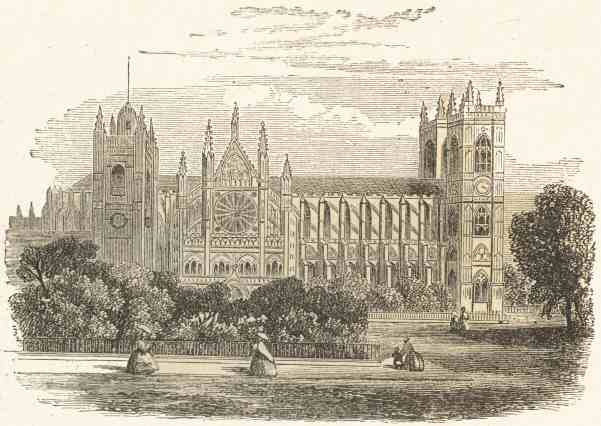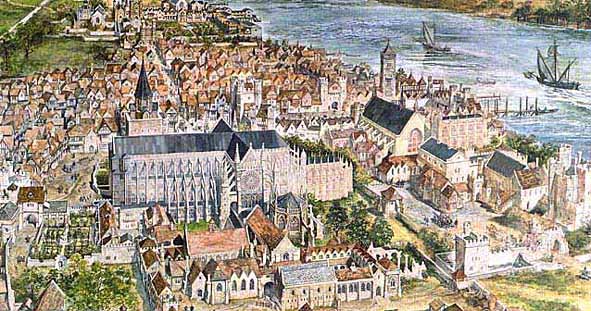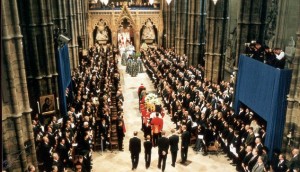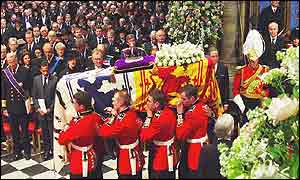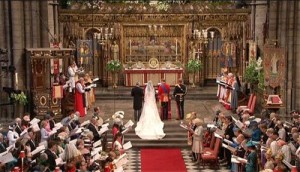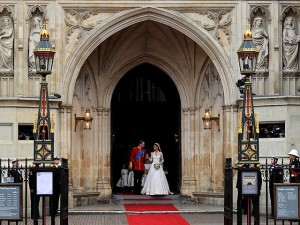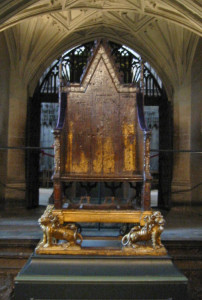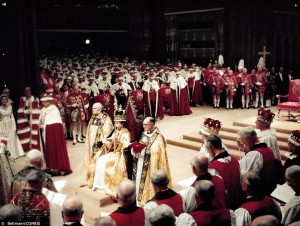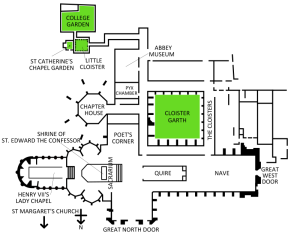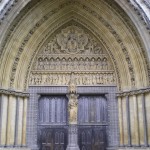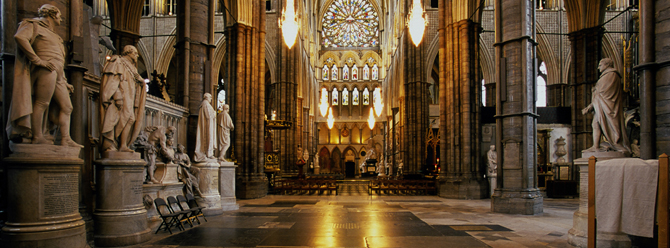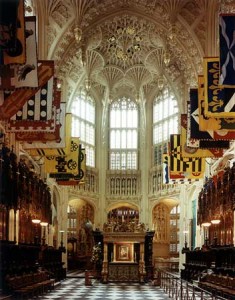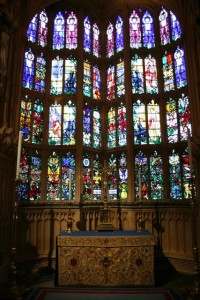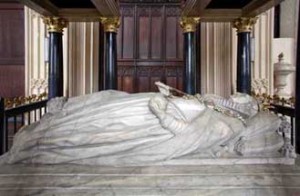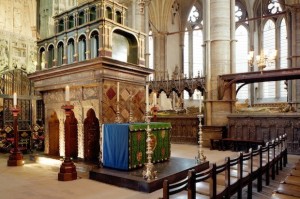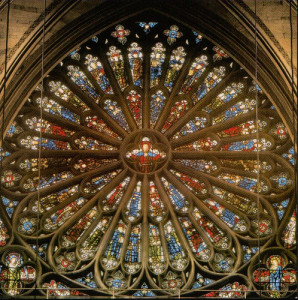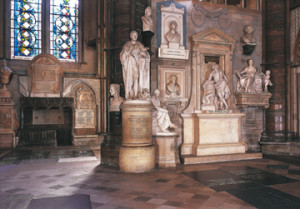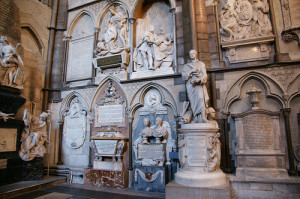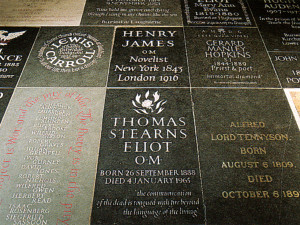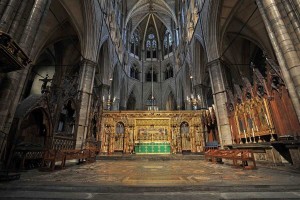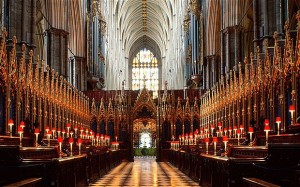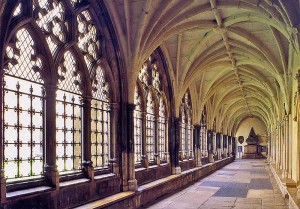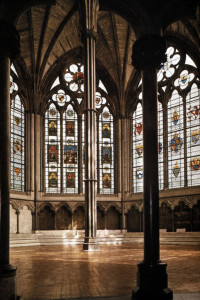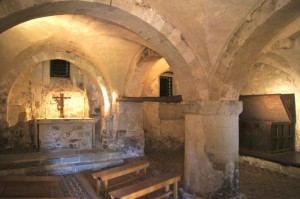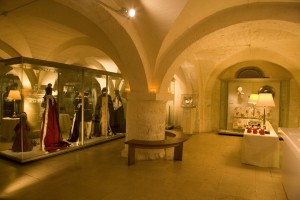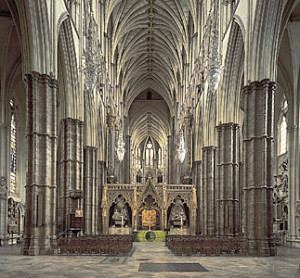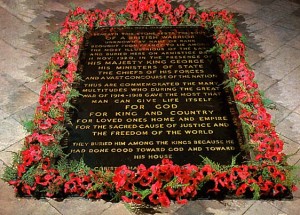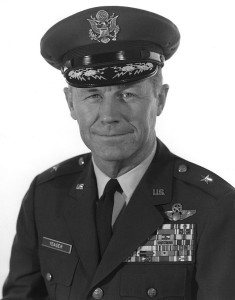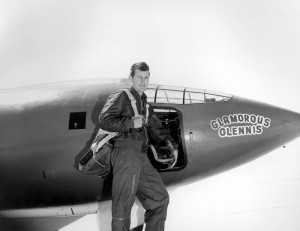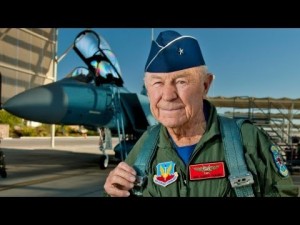In honor of Grace Kelly (born: November 12, 1929 died: September 14, 1982) I would like to take a look back to 1956 and her wedding to Prince Rainier III of Monaco which was then dubbed “the wedding of the century”.
In 1955, Grace Kelly had been invited to attend the Cannes Film Festival in the south of France because her latest film “The Country Girl” was being shown at the prestigious event; the next year she would receive the Best Actress Academy Award for her performance in the film. Grace had enjoyed the south of France when she had previously been there to film another movie, the 1955 Alfred Hitchcock film “To Catch a Thief” costarring Cary Grant. While on her European tour promote her latest film her publicist arranged to do a French magazine photo shoot for Paris Match at the Palace of Monaco where she was also scheduled to meet Prince Rainer. Grace had tried to cancel the meeting due to numerous complications but she was encouraged keep the appointment despite the fact that she was unprepared. It seems that her hotel had a power failure caused by a workers strike and she only had one dress pressed and ready to wear. Unfortunately, the dress was not one of her best and it was a black silk taffeta printed with large flowers, a square neckline, long sleeves, dropped waist tied with a sash. Since she had missed her salon appointment that day, her usually perfectly coiffured hair was severely pulled back with artificial flowers. Finally, Grace arrived at the Palace to meet the charming Prince Rainer of the small 370 acre principality located near the south of France that had been ruled by the House of Grimaldi since 1297. The Prince gave Grace a personal tour of the Palace gardens and his private zoo located on the grounds but it was far from an intimate meeting since they were accompanied by several photographers and members of the royal staff.
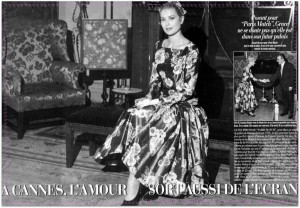
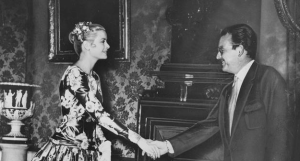
Following this friendly first meeting, the Prince was impressed by Grace who was the glamorous Hollywood movie star and Grace thought that the Prince was a charming gentleman. Afterwards, Grace returned to the United States to continue making movies. The two began writing each other letters and through their correspondence they were allowed the chance to get to know each other. As the months passed the royal chaplain of Monaco thought that the Prince had possibly found a potential wife and he encouraged him to continue his courtship of Grace. Then, just before Christmas, the Prince accompanied by the chaplain travelled to the United States to visit with the Kelly family in Philadelphia. This visit allowed the Prince and Grace to see each other again and the Kelly family was immediately charmed by their daughter’s suitor and also encouraged the match. After Christmas the couple went to New York City to celebrate New Year’s Eve and that is when the Prince proposed and presented Grace with an engagement ring. The Cartier ring had a 10.47 carat emerald diamond in a platinum setting with smaller baguette diamonds on each side.
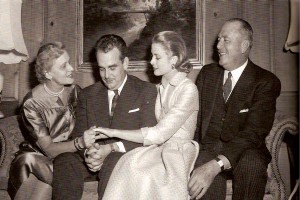
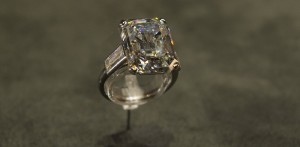
Immediately after her engagement was announced, Grace started planning for a spring wedding which would take place eight months later in Monaco. There were in fact two wedding ceremonies, one was the required civil ceremony and the second one was a larger religious ceremony attended by 600 guests. An estimated 30 million people watched the television coverage. (This is an amazing statistic considering the fact that television was a relatively new media and remember this was before the 1981 marriage of Prince Charles and Diana. For more information on regarding the British Royal Wedding, please see Part 4 of the series)
The Civil Ceremony –
The civil ceremony of Prince Rainer and Grace Kelly took place in the throne room of the Monaco Palace on April 18, 1956. The required civil ceremony took place before the religious ceremony and was performed by the Monaco Minister of Justice, with the vows exchanged in French, and there were only 80 guests in attendance. Grace wore a dress created by Helen Rose, the MGM studio costume designer, who also made the bridal dress for the religious ceremony which was performed the next day. The dress for the civil ceremony was a pale pink taffeta with an overlay of cream colored Alencon lace designed with a fitted bodice, high collar and a flared skirt which she accessorized with gloves and a hat. Prince Rainer wore striped trousers, a white vest and a black morning coat.
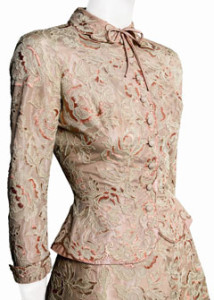
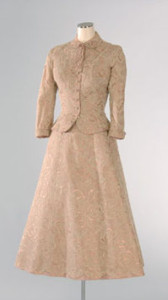
Immediately after the ceremony there was a celebration and the Prince along with his new Princess took the time to shake hands with the 3,000 citizens of Monaco that were their invited guests. Later that same night, the couple attended an elegant gala which was held in their honor at the Monaco Opera House. Grace wore a lovely Lanvin ballgown made of white silk organdy with a deep v-neck, high waistline with a full bustle and the dress was hand-embroidered and decorated with pearls, rhinestones and sequins.
The Religious Ceremony –
The religious ceremony for Prince Rainier and Grace Kelly was held the day after the civil ceremony. It took place on April 19, 1955 at the St. Nicholas Cathedral and was a high mass celebrated by the Bishop of Monaco with 600 guests in attendance including Cary Grant, David Niven, Ava Gardner and several international heads of state and other diplomats. The church was decorated with floral arrangements of white lilacs, hydrangeas, lilies and snapdragons.
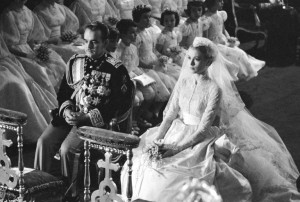
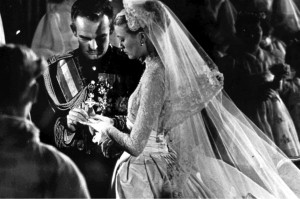
The Matron of Honor was Grace’s sister, Peggy, and there were also six bridesmaids. They all wore yellow silk taffeta dresses with a yellow organdy overlay purchased from the Neiman Marcus department store and made by Priscilla Kidder (later owner of the successful bridal clothing line of Priscilla of Boston). To complete the wedding party there were six junior attendants, four girls and two boys, which were all dressed in white.
After the ceremony, Prince Rainier and Grace rode from the church through the streets back to the Palace in a cream and black Rolls Royce convertible that was a gift from the people of Monaco. The Palace’s Court of Honor was the location of a grand reception which featured a six tier wedding cake that was cut using the Prince’s sword.
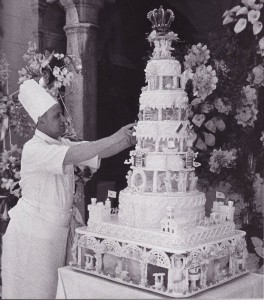
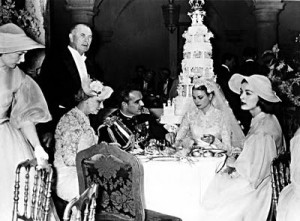
The Wedding Dress –
As a gift to Grace Kelly from the MGM studio, Helen Rose, their costume designer created a beautiful bridal dress for her wedding to Prince Rainier and has remained one of the most famous and iconic wedding dress for decades. (… that is until 2011 and the wedding dress Kate Middleton wore when she married Prince William. It has been said that Grace’s bridal dress was the inspiration and had a direct influence on the design of Kate’s dress. For more information on Prince William and Kate’s royal wedding, please see British Royal Wedding – Part 4)
Grace’s wedding dress was a stunning creation which was made at the MGM studios and it took six weeks using three dozen seamstresses and cost an estimated $7200.00. The dress used twenty-five yards of silk taffeta, one hundred yards of silk netting, tulle, peau de soie and antique Brussels lace that was over 125 years old. (peau de soie is a soft silk fabric of satin weave which has a dull finish) The elegant dress was designed with a high collar, long sleeves, a fitted bodice, a full skirt and a train that measured three feet in length. Additionally, the bodice had a structured under bodice for support and two petticoats were worn underneath to provide fullness to the skirt.
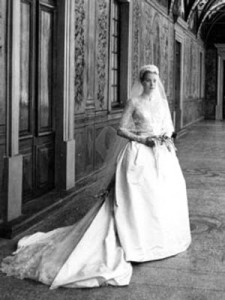
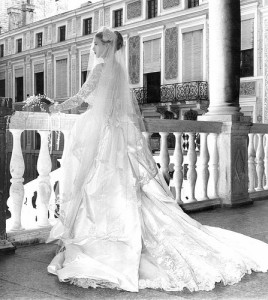
A Juliet cap was also made to compliment the dress and worn on the back of the head with three points at the hairline and a circular shape in the back. The headpiece used the same pearl embroidered lace as the bodice and was stretched over a wire frame. It was decorated with seed pearls and small wax orange blossoms. Attached to the headpiece was a circular wedding veil which was waist length in the front and then gradually longer towards the back. The veil used 90 yards of tulle and is edged with lace but was left sheer in the front to provide an unobstructed view of Grace’s face.
Grace completed her bridal ensemble with shoes custom made by David Evins, a leading American shoe maker that Grace had previously worked with. The wedding shoes were covered with lace to match the dress and had a 2 ½ inch heels. Grace also requested that a copper penny be added to her right shoe, a traditional good luck charm for brides, and one was sewn into the arch of the shoe.
Finally, on her wedding day Grace carried a small bouquet made of Lilies of the Valley and a small Bible. The bible was a gift from a family friend and a custom cover was made by the MGM wardrobe department of silk faille with a lace applique overlay embellished with seed pearls.
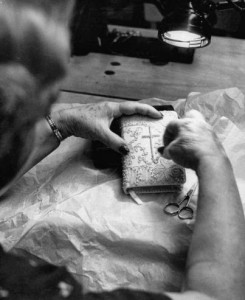
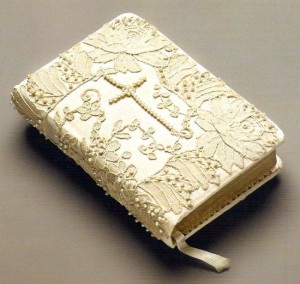
Prince Rainier wore a Napoleonic styled military uniform which he personally designed.

